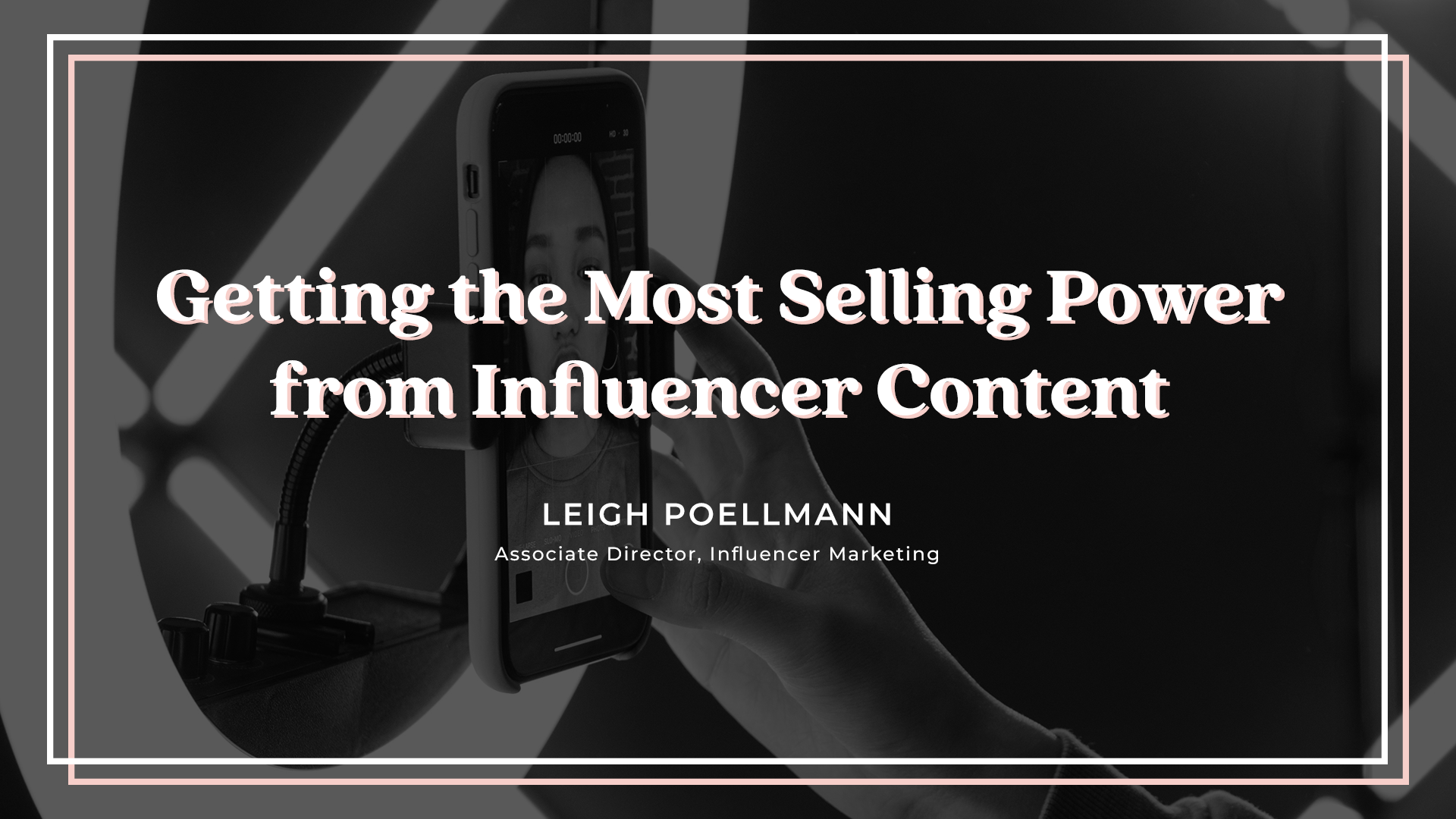
When the pandemic first hit, marketers had to rethink their plans and pivot to digital-first strategies. With brick and mortar commerce options practically nonexistent at the time, brands and marketers relied on social commerce to drive sales and growth. Over the last few years, social media has grown from a place to consume content, to a place to discover and purchase products. Even with retail doors open today, social commerce continues to drive positive sales results, and according to new research from Traackr, 82% of marketers report that influencer marketing has driven sales for their brand.
While we know influencers are a valuable tool to authentically connect brands and the audiences they are trying to reach, influencer marketing has the power to do more than shift the needle in terms of awareness. Influencers can also impact the bottom line. With the right strategies, brands can get the most selling power out of the influencer content created for them. As measurement gets more sophisticated, it’s our job as an agency partner to ensure brands get the best return on investment (ROI) when it comes to influencer programs. Here are a few tips to maximize influencer content.
Instagram and Facebook are the top two platforms used to purchase products. From a generational viewpoint, Gen Z is more likely to purchase on Instagram and YouTube, followed by TikTok, while Millennials ranked Facebook as their top social shopping destination, followed by Instagram, YouTube and TikTok. Knowing this, marketers should select platforms for their influencer partners based on the brand’s target audience.
Beyond selecting the right platform(s), consumers tend to purchase products in specific categories on social. According to Traackr’s report, 49% of respondents said that they are more likely to buy fashion products, while 44% said beauty and personal care, and 40% said electronics. Like platforms, we must also take generation into consideration. For example, Millennials were 10% more likely to buy home goods, and 7% more likely to buy health and wellness products compared to Gen Z.
Knowing products in the fashion, beauty/personal care, electronics, health and wellness and home goods space sell the best on social media, we can develop tailored tactics for our clients based on their products or service.
While organic influencer content can drive sales, whitelisting allows brands to reach a more targeted audience that is more likely to take a specific action. Through whitelisting, influencers grant advertisers access to their social accounts, allowing brand partners to optimize paid support behind influencer content. Whitelisting allows brands and marketers to achieve certain objectives, such as reach, brand lift, page views or purchases. Whitelisting can also justify future influencer programs by measuring the tangible ROI.
Content usage and exclusivity are the main factors that drive up an influencer’s fee. So, it’s important for marketers and brand partners to align on what is REALLY needed when contracting partners. For example, asking for worldwide paid usage across digital/internet, social, print media, etc. in perpetuity can add thousands of dollars to an influencer’s base fee, and that usage may not be necessary. To avoid wasting dollars on extensive usage terms, we advise brands to see how content performs organically first and then invest in the top-performing pieces of content to leverage for paid efforts. Net, net we don’t want to pay usage rights for content that will never be boosted.
As for exclusivity, it’s costly to get anything more than 60 days. Essentially, if we want to limit their brand partnerships, we have to pay to make up for the lost revenue. The odds that a competitor would go live after your post are low, as most brands require exclusivity between seven and 30 days.
Always share trackable link(s), such as bitly or affiliate link, with influencer partners to include in Instagram Story content, bios or captions (if link is clickable). Trackable links can help marketers and brands measure web visits, sales and subscriptions. This is another metric for tracking the success and ROI of influencer campaigns.
In summary, influencer marketing has proven to be an effective strategy for brands, but is a constantly changing tactic for reaching consumers. As consumer behaviors on social media shift, so should influencer marketing strategies to prove success. Reach out to us at info@socialflyny.com to see how influencer content can drive sales.
Written By: Leigh Poellmann, Associate Director, Influencer Marketing